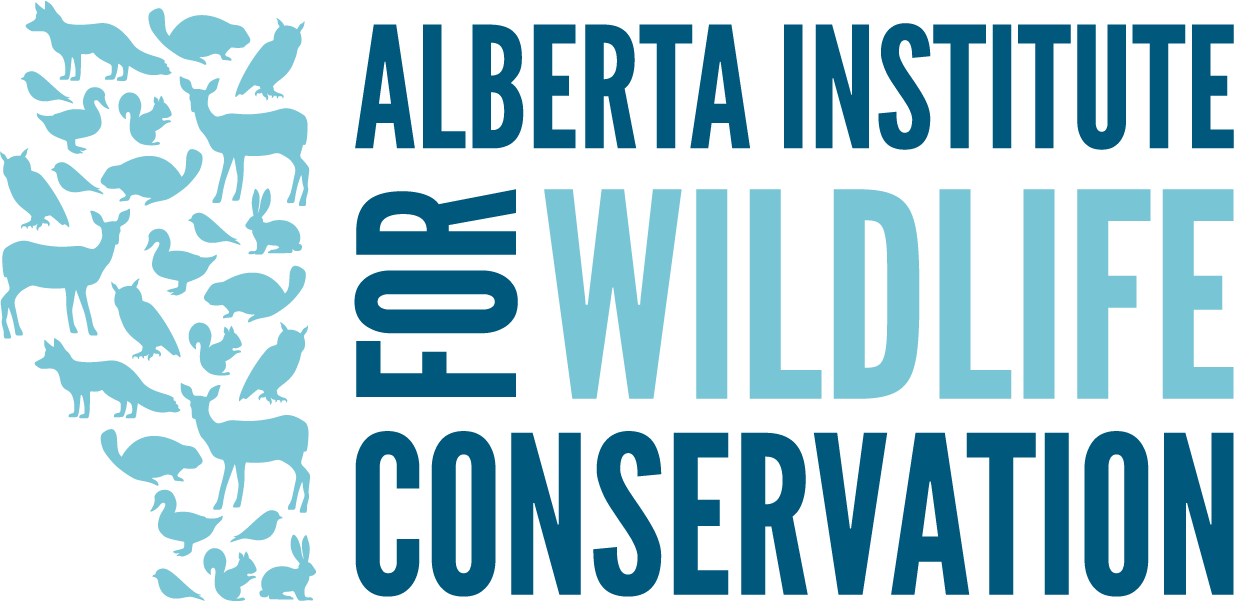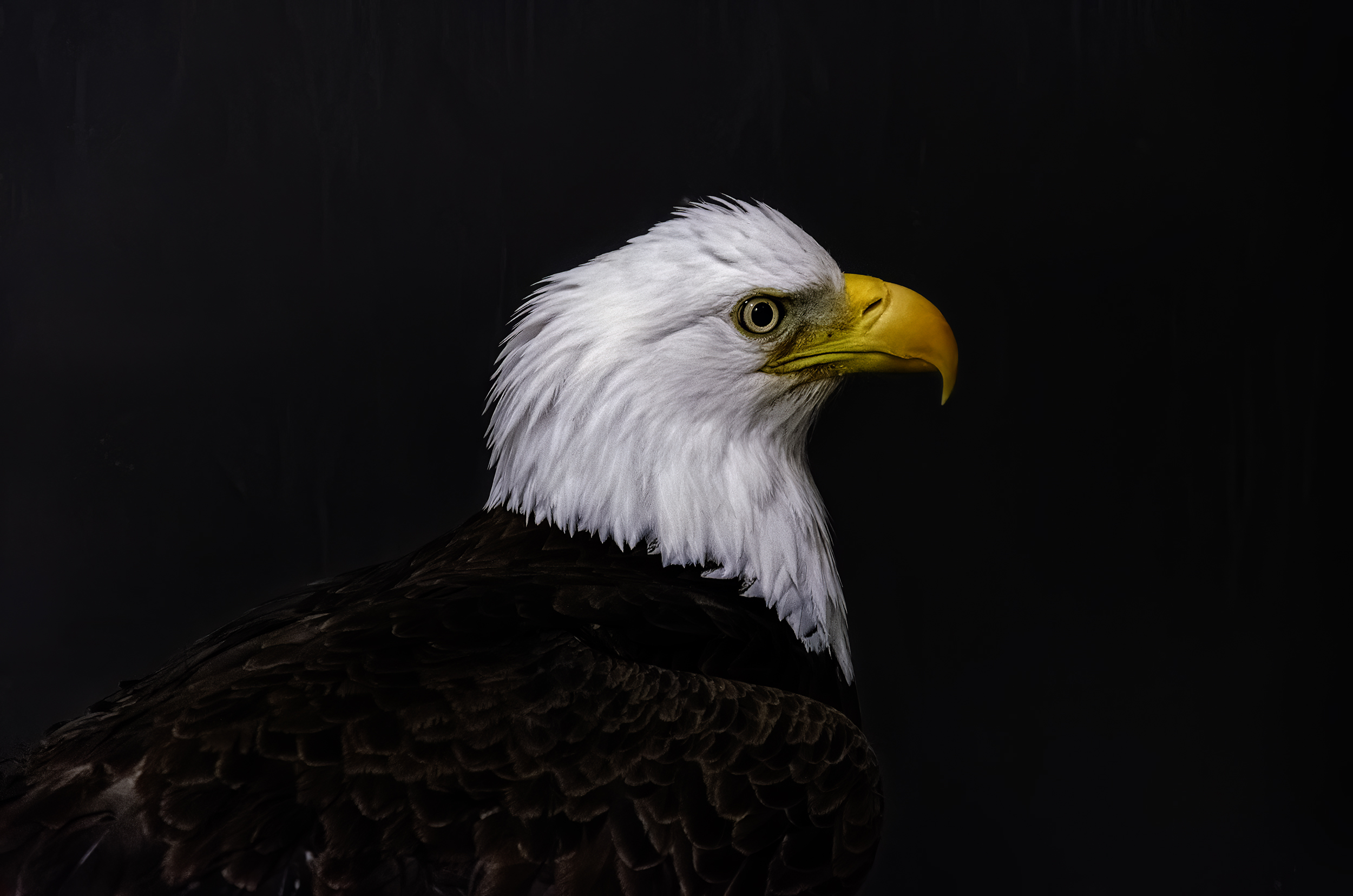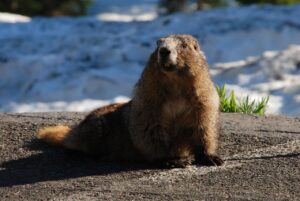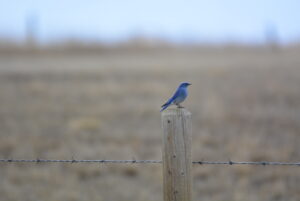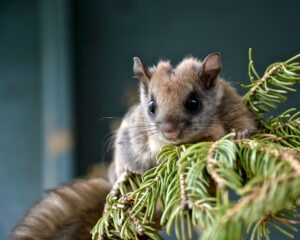By Chelsea Blyth
Alberta is home to two of North America’s most iconic birds of prey: the bald eagle (Haliaeetus leucocephalus) and the golden eagle (Aquila chrysaetos). These powerful birds often inspire awe when soaring high over river valleys or perched in quiet watch over open plains. While they may appear similar at first glance, these two species have distinct appearances, behaviors, and ecological roles.
How to Tell Them Apart
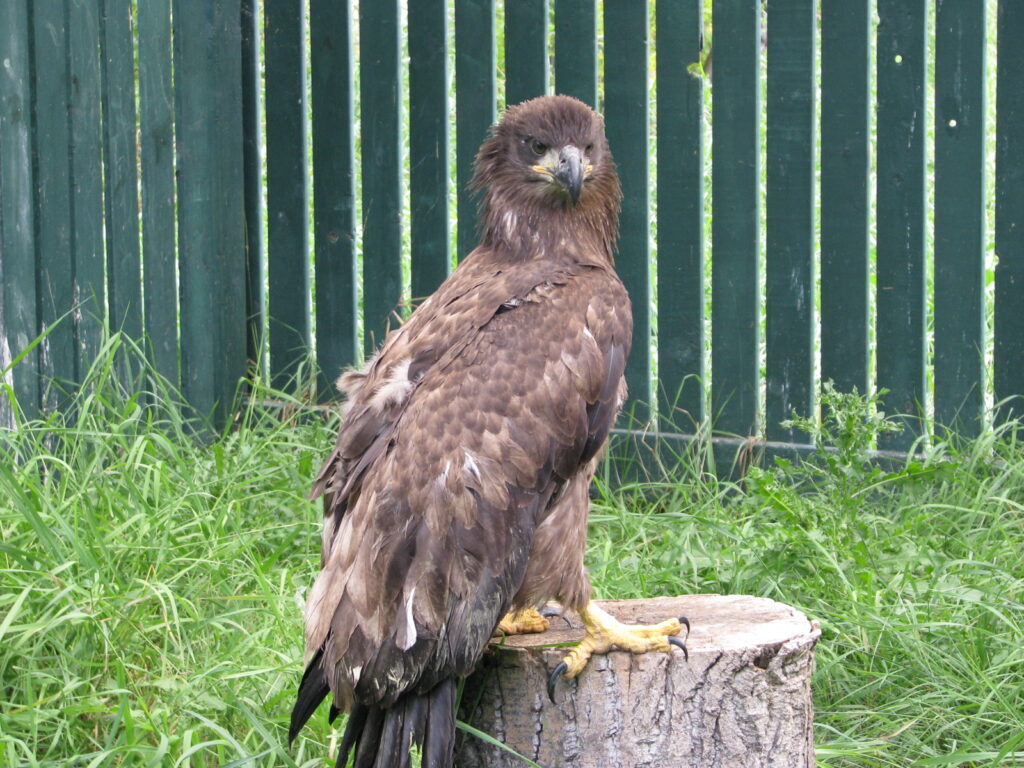
Adult bald and golden eagles are relatively easy to distinguish. The bald eagle has a striking white head and tail that contrast with its dark brown body and wings. It also has a large, hooked yellow bill and yellow legs and feet. This white plumage does not appear until the bird is about five years old.¹
The golden eagle is more uniformly dark brown with golden-bronze feathers on the back of its head and neck. Its bill is dark at the tip, and unlike the bald eagle, it has feathered legs all the way down to its feet. This feature is one of the most reliable field marks, especially when viewed up close or through binoculars.¹
Juvenile eagles can be more difficult to identify. Immature bald eagles are mostly brown with white mottling on the belly and under the wings. Their head and tail are also dark, not yet showing the adult’s bold coloration. By contrast, juvenile golden eagles often have a cleaner pattern, with well-defined white patches on the wings and a white base on the tail, all bordered by darker feathers.¹
One useful trick is to observe the leg feathering. Golden eagles have fully feathered legs, while bald eagles have bare, yellow lower legs. Behavior and location can also provide helpful clues.
Diet: Fishing vs. Hunting
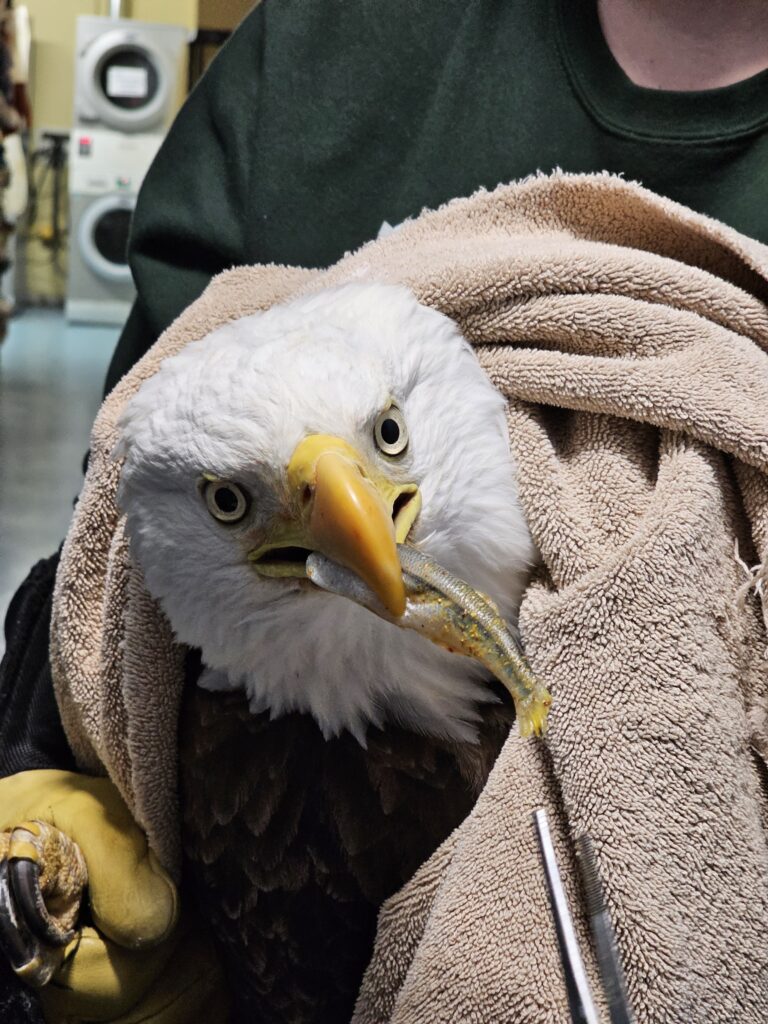
The bald eagle is primarily a scavenger and fish eater. It is often seen perched near lakes, rivers, and reservoirs where fish are plentiful. Bald eagles will also feed on waterfowl, small mammals, and carrion, including roadkill and dead fish. They are known for stealing food from other birds, particularly ospreys.¹
The golden eagle is a more active and versatile predator. It hunts mostly mammals, including rabbits, hares, ground squirrels, and occasionally young deer. In Alberta’s open province, golden eagles often soar at great heights, using their keen vision to spot prey far below.² They rarely eat fish and are not as likely to scavenge as bald eagles.
Habitat in Alberta
In Alberta, bald eagles are commonly found near water bodies where their preferred food sources are available. They nest in large trees or occasionally on cliffs, using bulky stick nests that they return to year after year. They are often seen along the Bow River, North Saskatchewan River, and around large lakes such as Lesser Slave Lake and Lake Athabasca.³
Golden eagles prefer more open and rugged terrain. They are typically found in the foothills, grasslands, and badlands of southern and central Alberta. Nests are usually built on cliffs or rocky outcrops with a wide view of the surrounding landscape. Golden eagles are also commonly observed along migration routes in the Rocky Mountain foothills, particularly during spring and fall.³
Both species can be seen year-round in Alberta, though some individuals migrate south during the winter months.³
Conservation Status
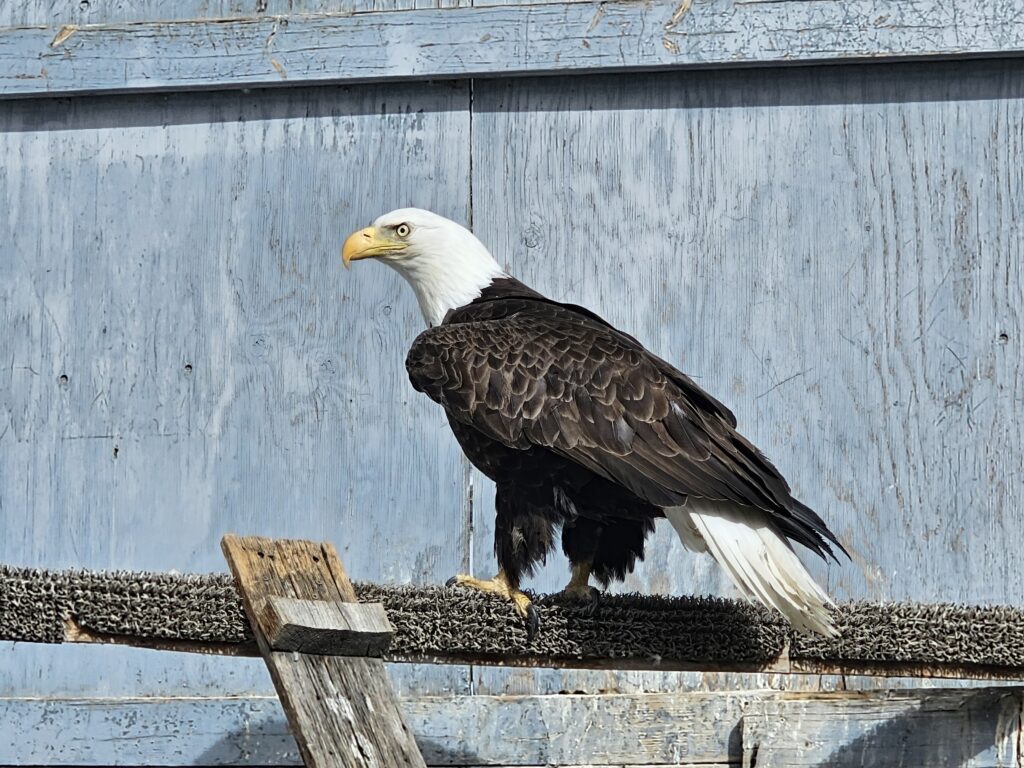
The bald eagle has one of the most successful conservation stories in North America. Once endangered due to the effects of the pesticide DDT, which caused thinning of eggshells, bald eagle populations have recovered significantly since the chemical was banned in the 1970s.³ In Canada, they are now considered Not at Risk and are protected under the Migratory Birds Convention Act and the Species at Risk Act.³
The golden eagle is also listed as a species of Least Concern by the International Union for Conservation of Nature. However, they face ongoing threats such as habitat loss, collisions with wind turbines, lead poisoning from ingested bullet fragments, and illegal shooting.² Golden eagles are more difficult to monitor than bald eagles, and researchers in Alberta continue to study their population dynamics and migration patterns.³
Where and When to Look
If you want to spot one of these majestic birds, Alberta offers excellent opportunities. Bald eagles are often seen perched in tall trees near rivers and lakes, especially in summer when nesting activity is high. In winter, they may gather near open water or in areas with abundant carrion.
Golden eagles are best viewed during migration seasons, particularly in the Crowsnest Pass and along the eastern slopes of the Rockies. They can also be seen hunting over open rangelands in southern Alberta. Bring binoculars and scan the skies for a large, slow-gliding silhouette with slightly upturned wings.
Conclusion
Both bald and golden eagles are top predators and important parts of Alberta’s ecosystems. While the bald eagle is more often associated with lakes and rivers, the golden eagle rules over the province’s drier, open spaces. Learning to recognize their differences helps foster a deeper appreciation for the wildlife around us and supports efforts to protect their habitats.
References
- Cornell Lab of Ornithology. “All About Birds: Bald Eagle and Golden Eagle.” Cornell University. Accessed July 2025. https://www.allaboutbirds.org
- BirdLife International. Aquila chrysaetos (Golden Eagle). IUCN Red List of Threatened Species, 2024. https://www.iucnredlist.org/species/22696096/203884141
- Environment and Climate Change Canada. Bald Eagle (Haliaeetus leucocephalus): General Status Report. 2022. https://wildlife-species.canada.ca
